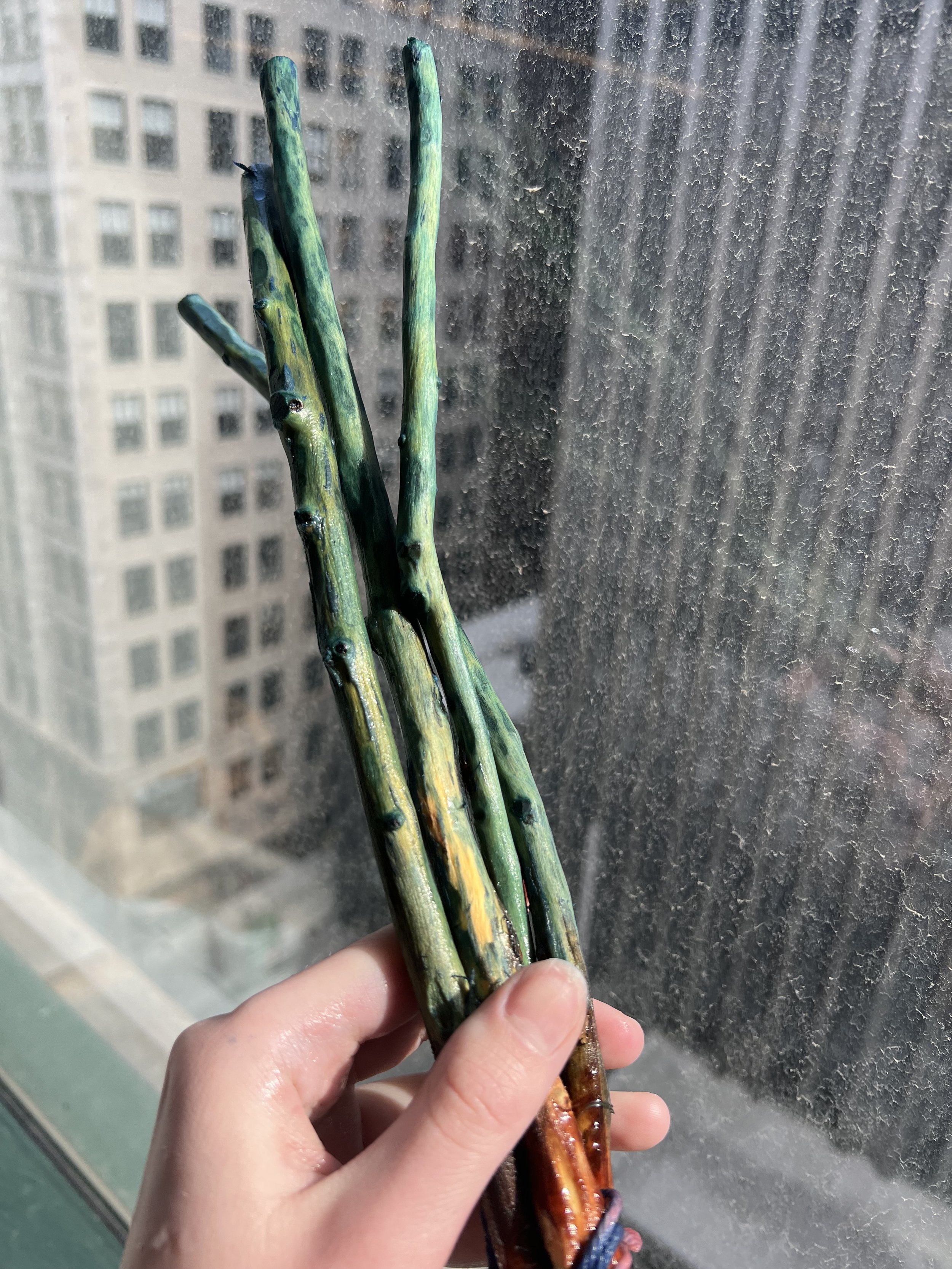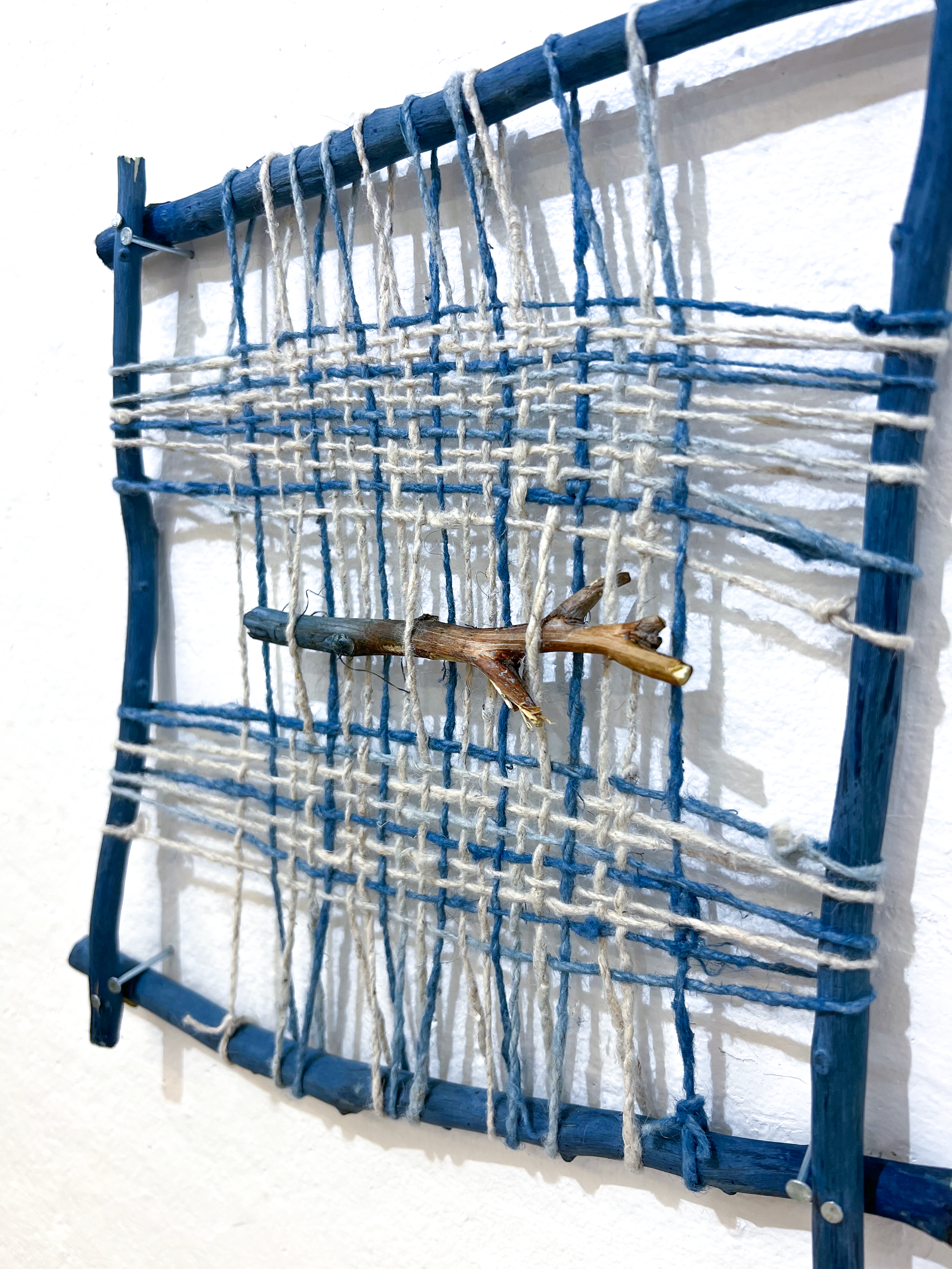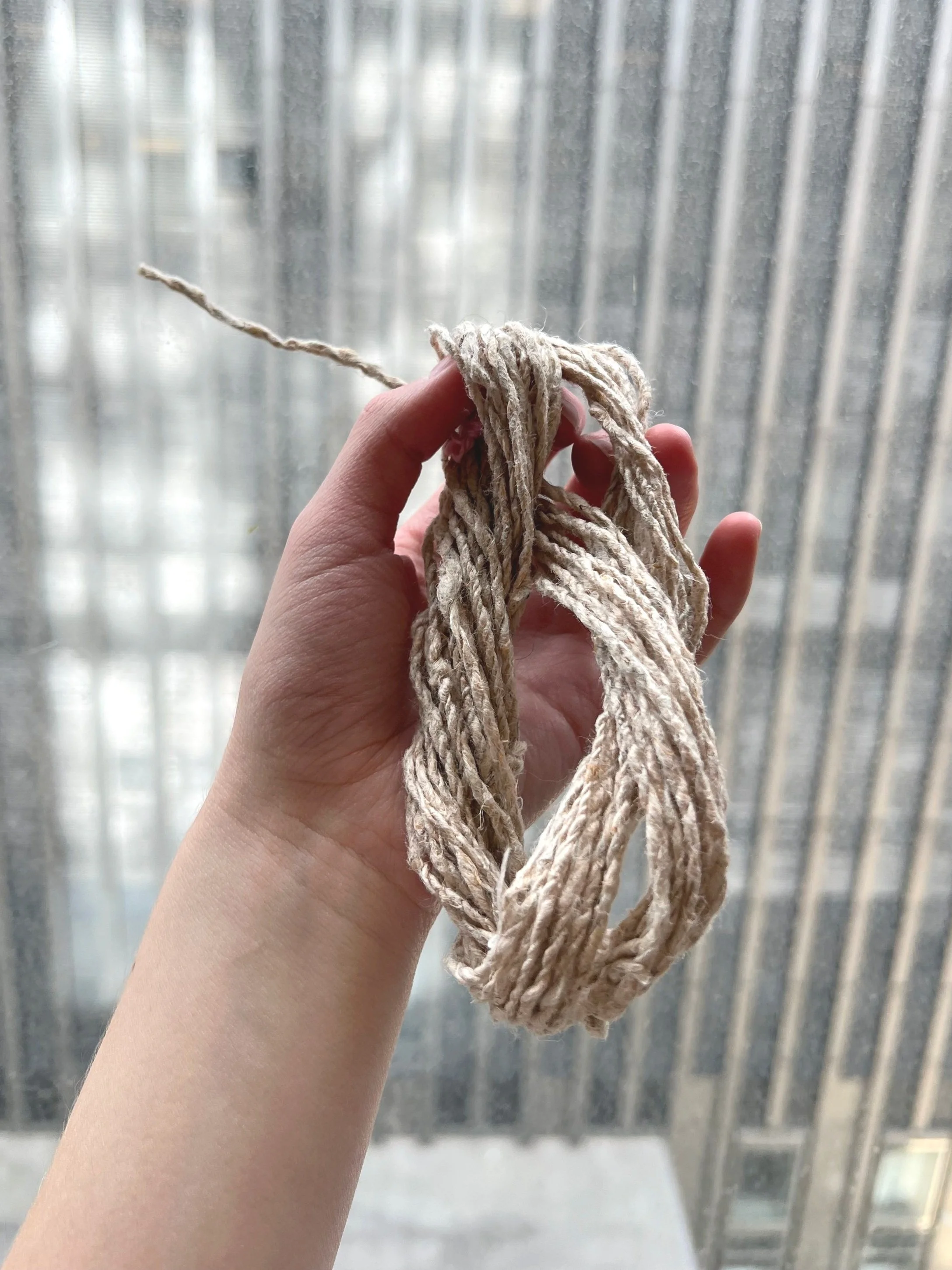Stinging Nettle: Material Research
Apr 2023, Nettle plant fibers, indigo, red elm.
Material research has become an integral part of my art-making practice. I aim through my research in foraging and processing natural materials that I can further connect with the natural world and the labor of process in my work.
Stinging nettle is a common plant that has been largely labeled as a weed. Nettle has a long history in several countries, with recorded usage dating all the way back to the Bronze Age (3000 BCE – 1200 BCE). It is not only edible and one of the world’s most nutritious herbs, but it also has a long history of use for modulating the body's inflammatory pathways and supporting upper respiratory health.
During the First and Second World Wars, Nettle fiber was used as a substitute for cotton yarns, when this material was unavailable. It can be dyed or bleached like cotton. It has similar qualities to more widely used materials such as hemp, linen, bamboo, and flax.
Native American usage for nettle spans from making clothing out of the fibers to food and medicine and ceremonial practice. It has been used in sweat lodges to aid in relieving respiratory infections and arthritic pain, and ingested to treat various ailments such as urinary infections. It is also used to aid in muscle relaxation and reducing bleeding during childbirth.
The plant is also present in European folklore and mythology. Its rich history seems to be largely overlooked in contemporary food, textiles, and medicine.
Here, I am foraging a patch of stinging nettle. I am using a process called root retting where the plant is harvested after it has died.

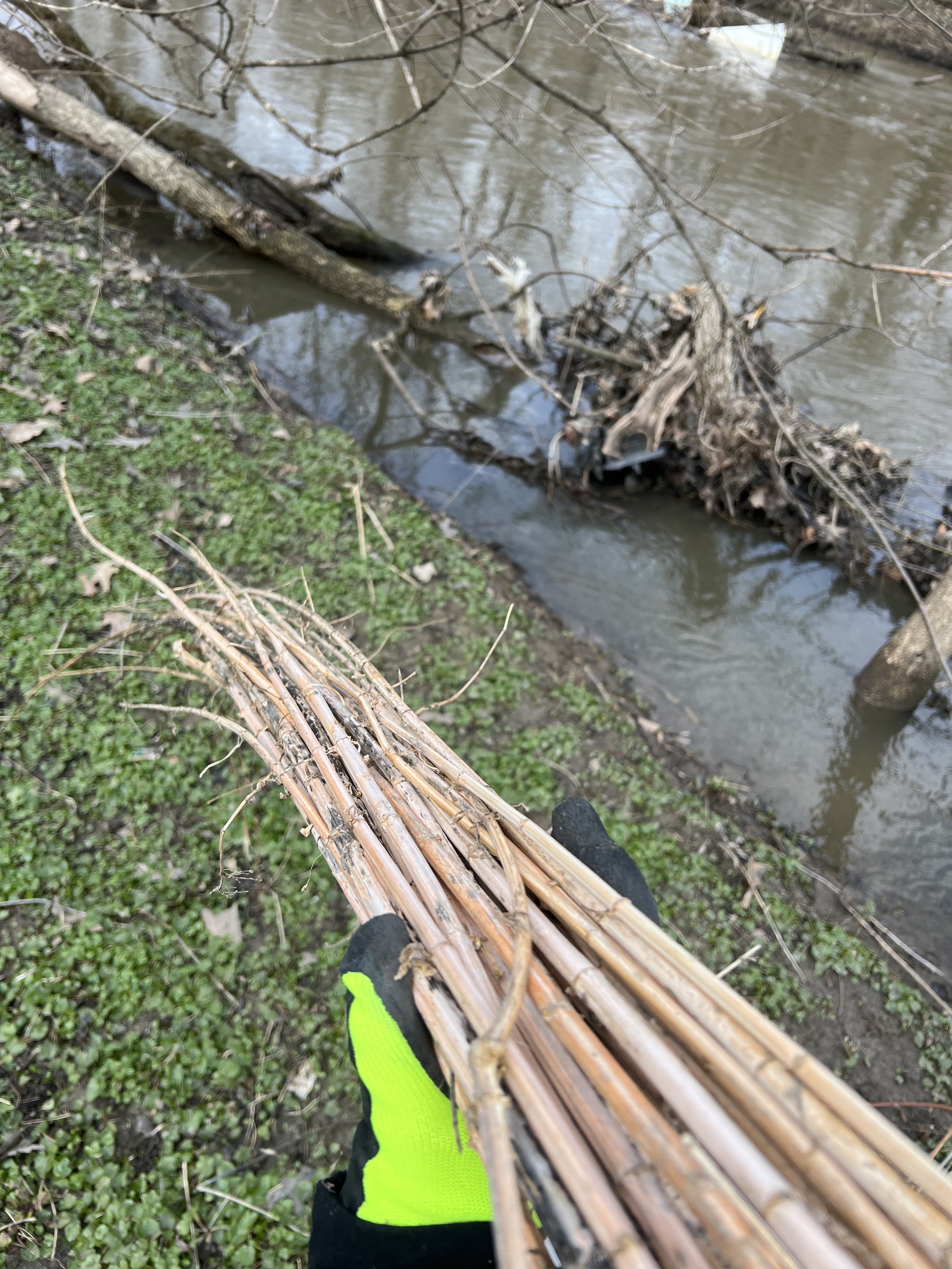
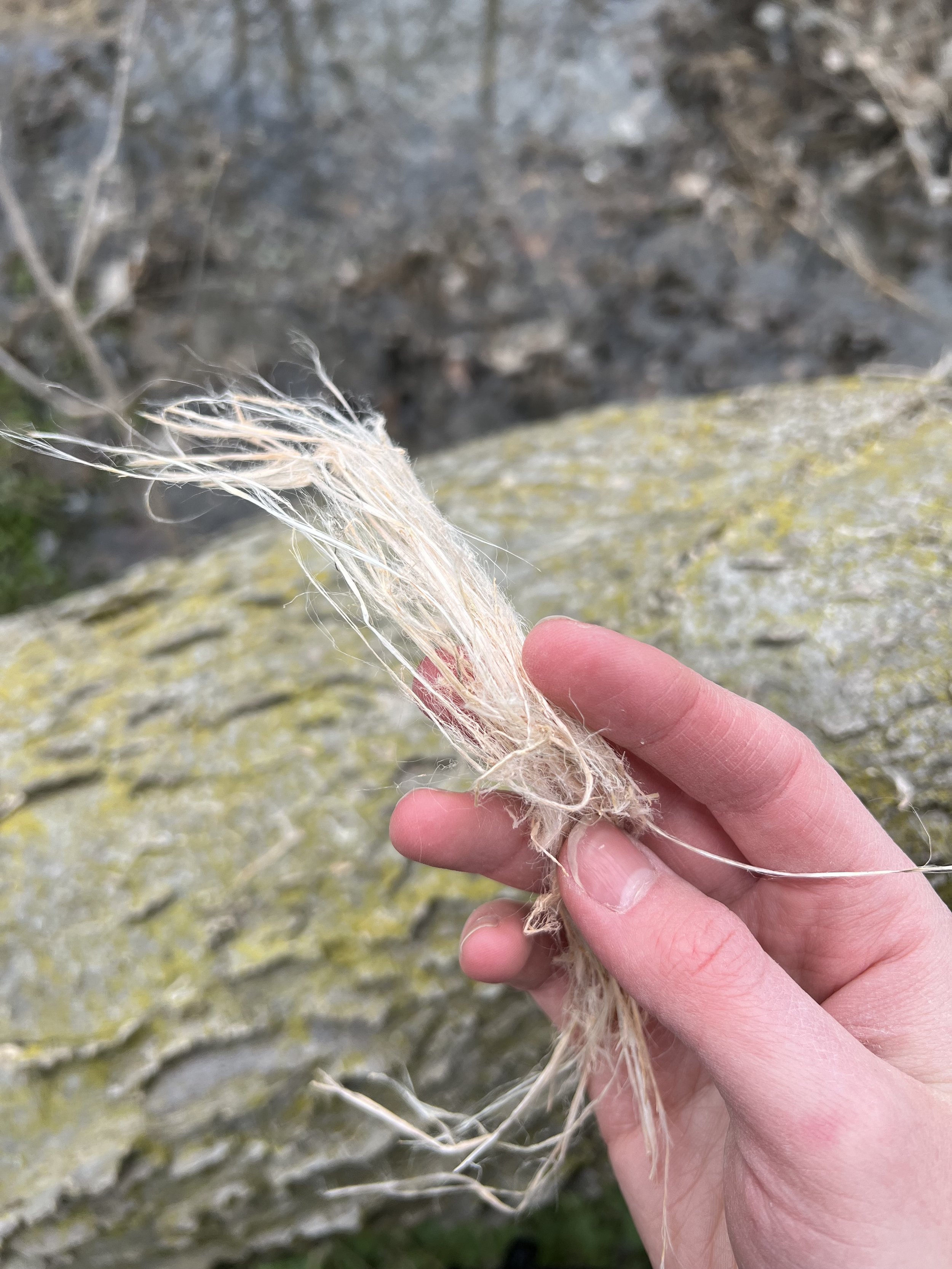
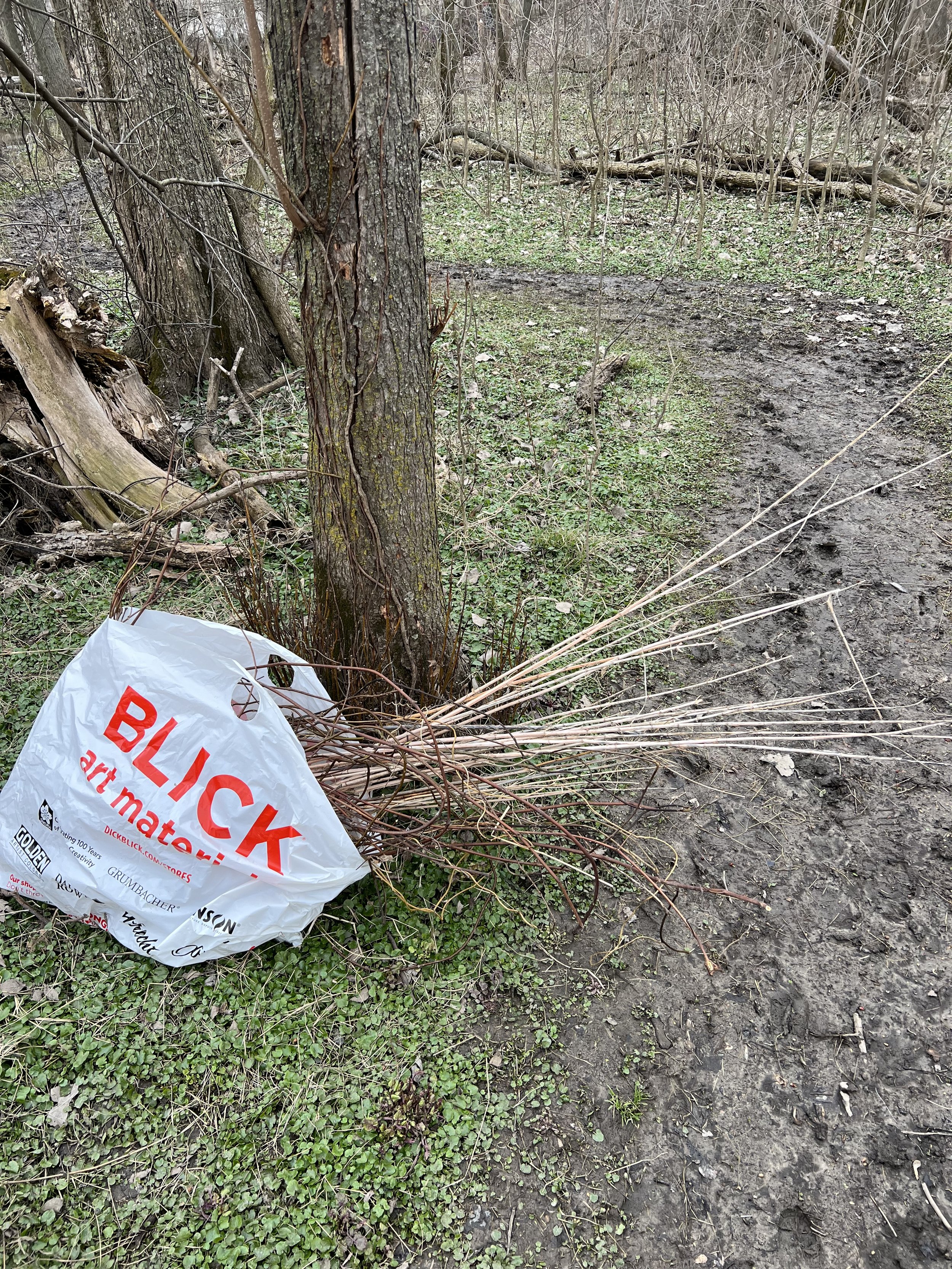
Processing the raw fibers using hand carders to brush out the hard material from the fine. Then beginning to spin the fibers.
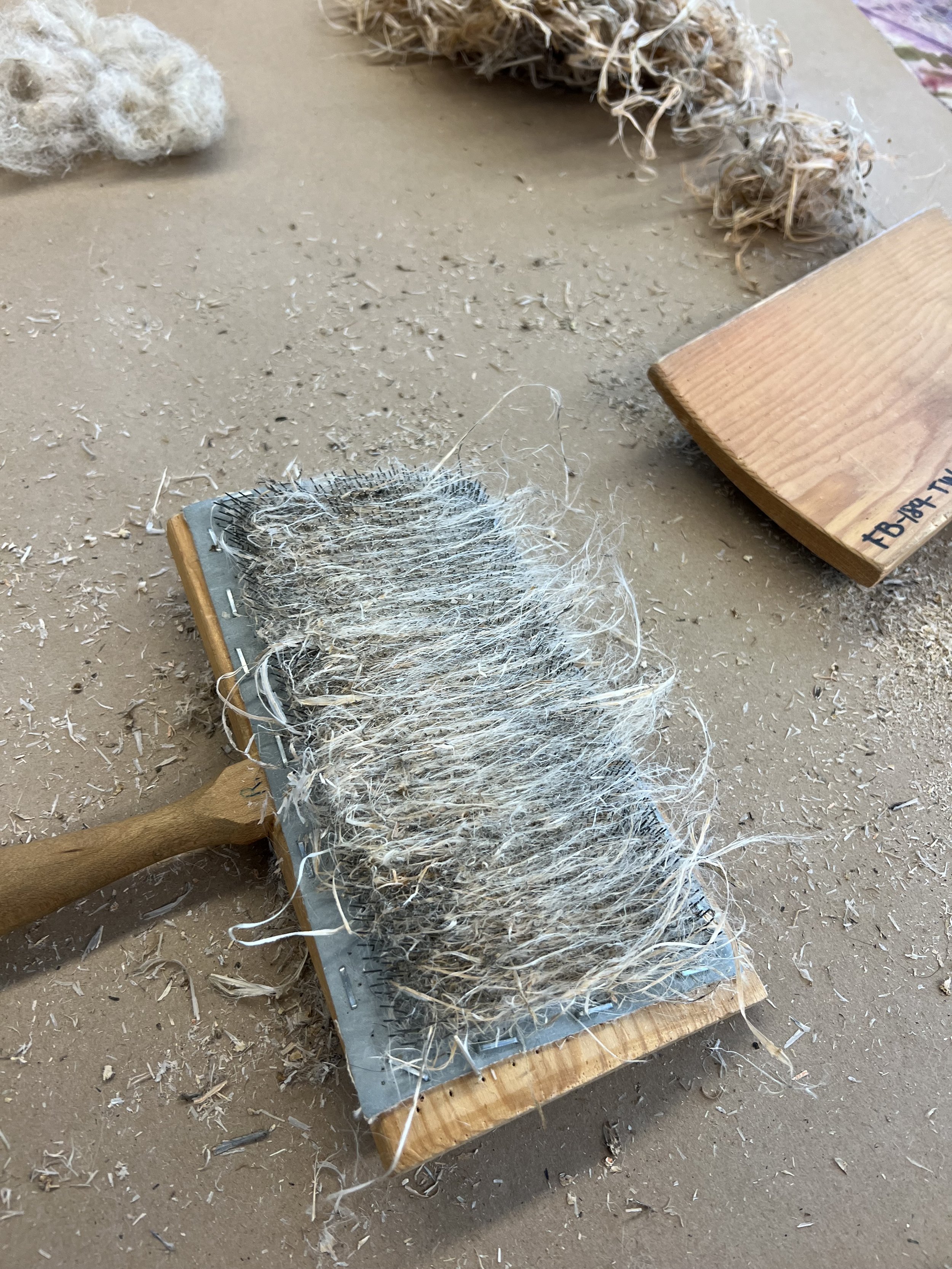
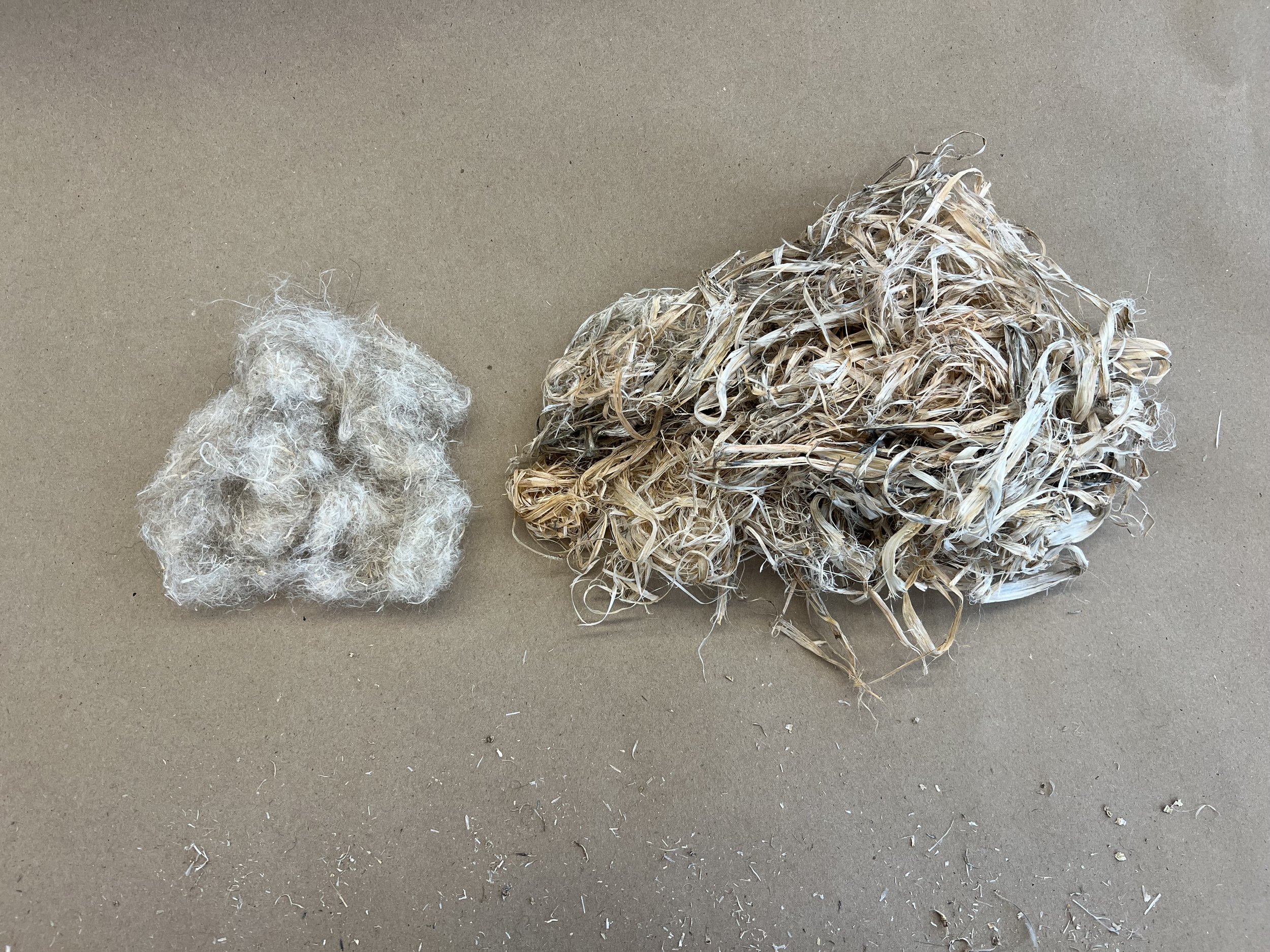

Single-ply bundle then spun into two-ply. Material dip dyed with indigo.
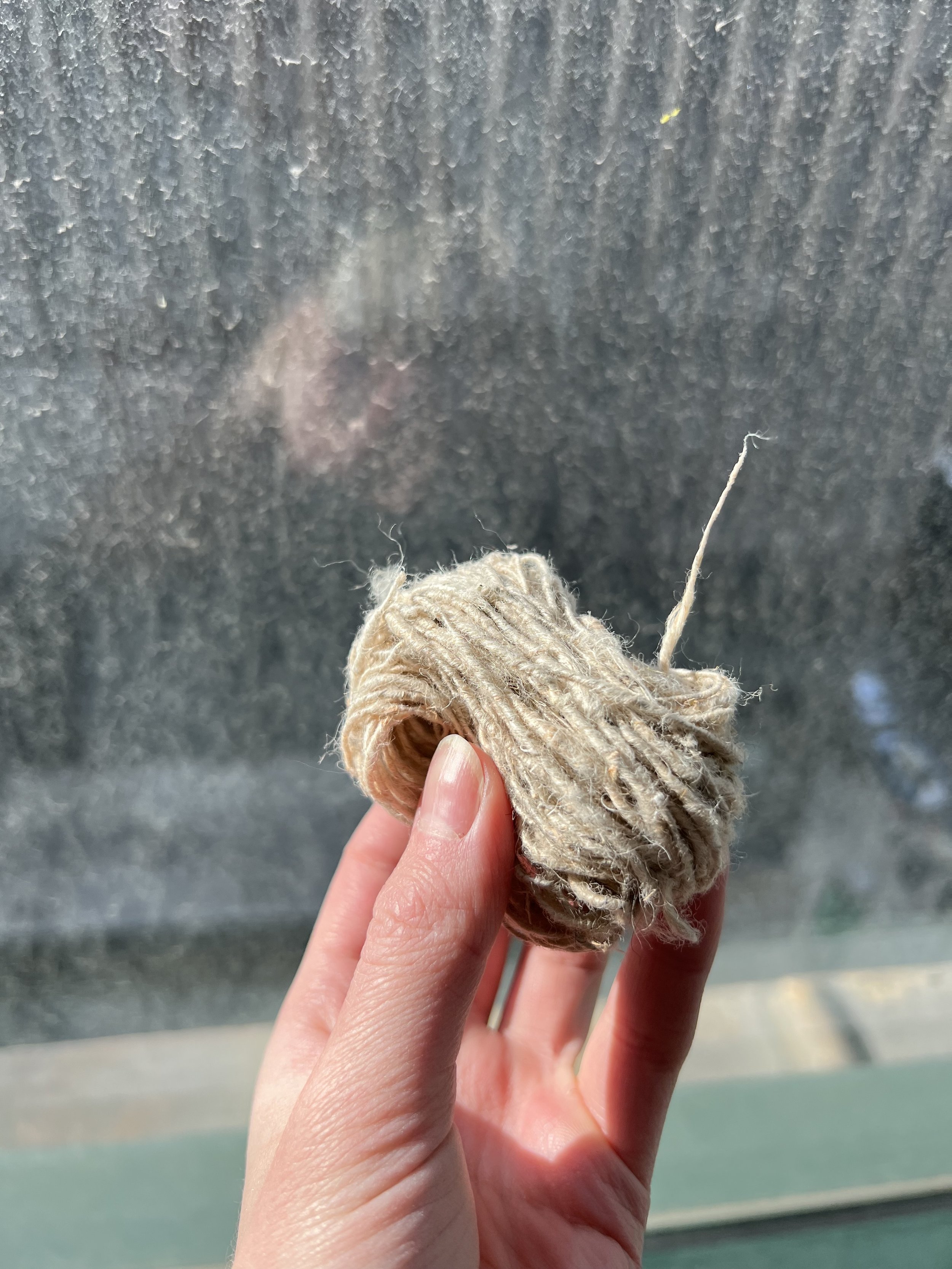
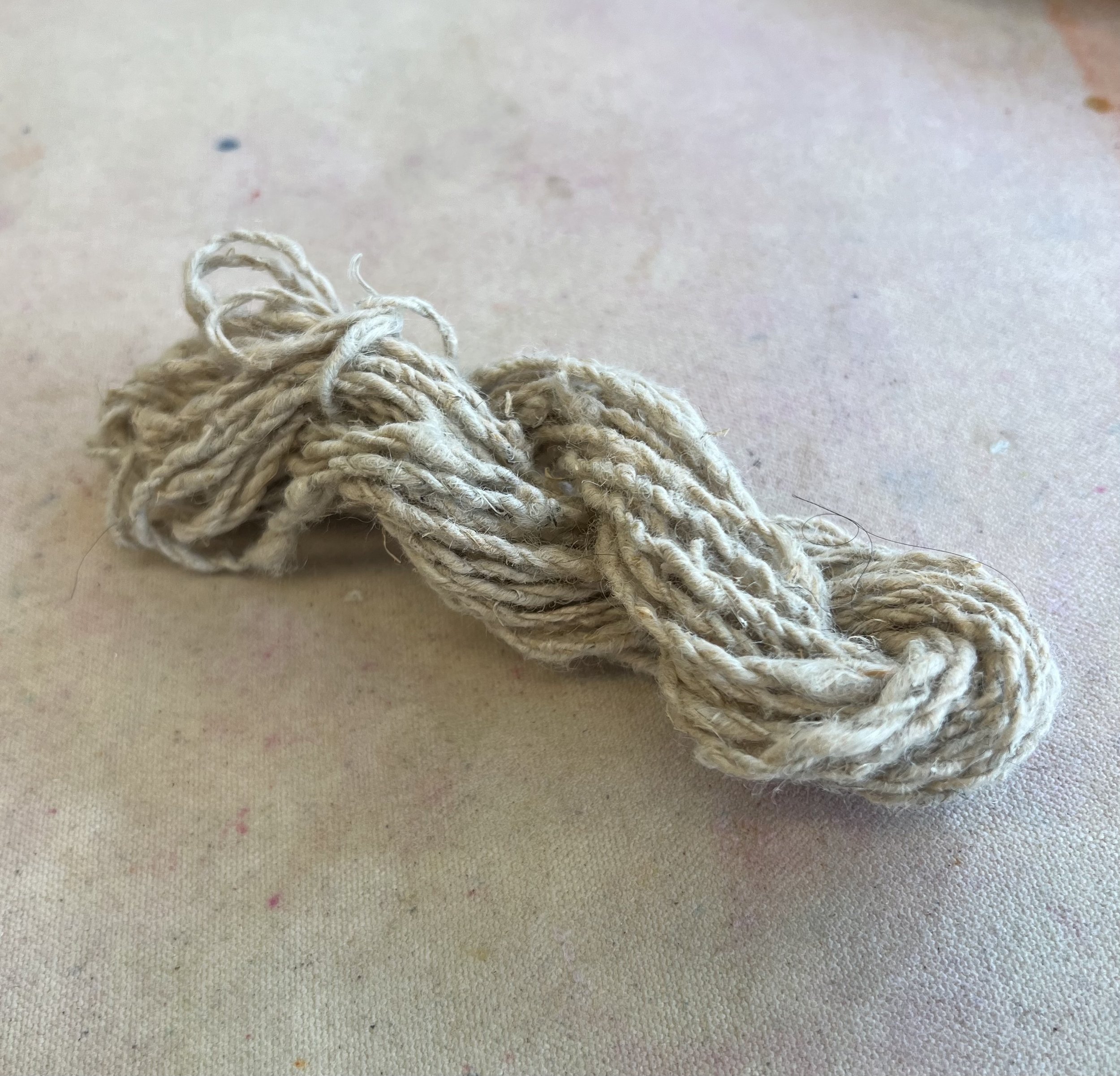
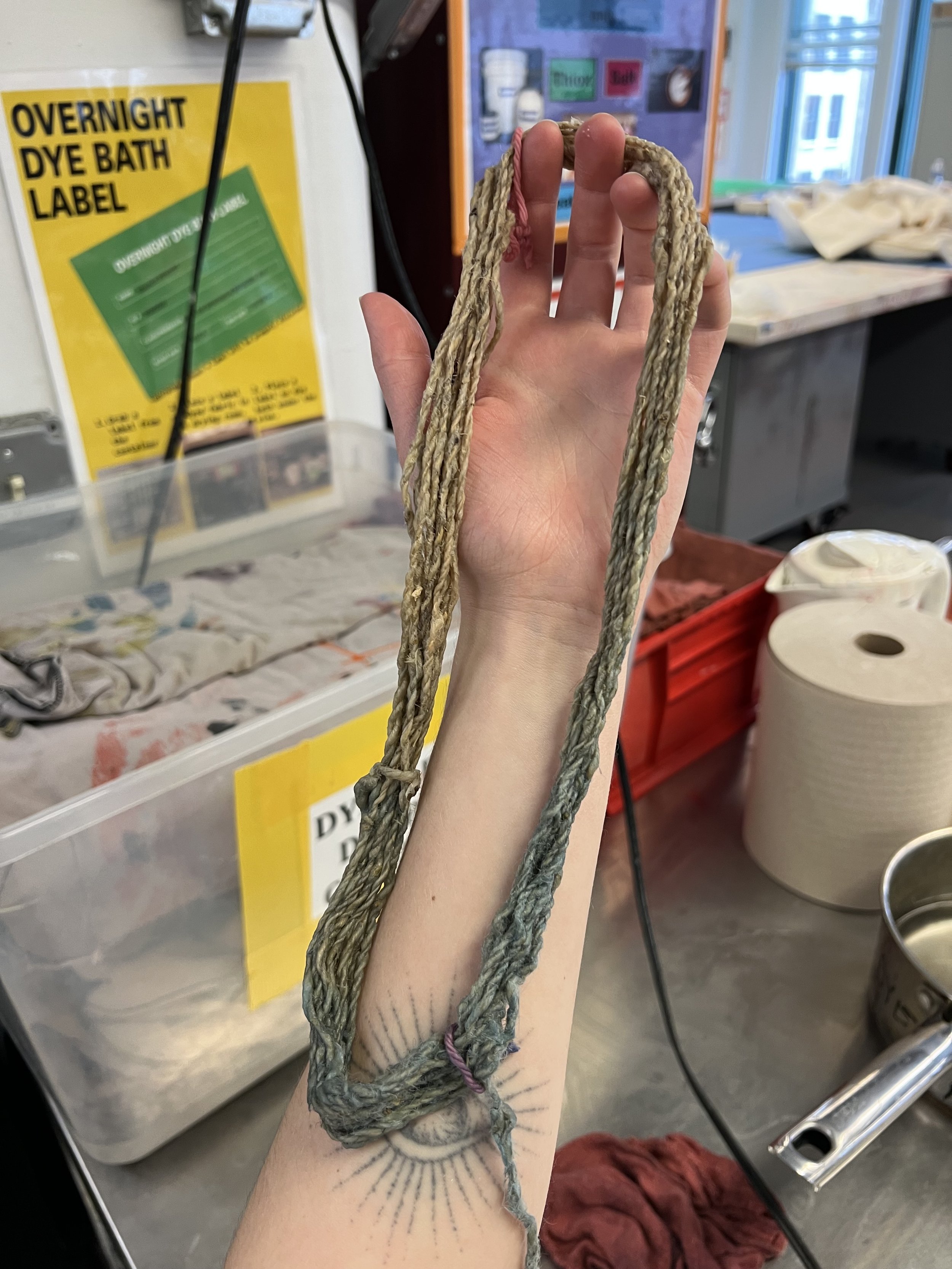
Dyeing foraged red elm branches, and the final research structure.
